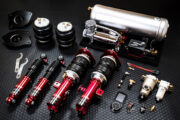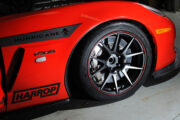Tell any Porsche dealer that their cars are nice and they’ll most likely correct you by saying that their cars aren’t nice: that they’re “edel.” Precious. And make no mistake: from the classic air-cooled 911, to the latest twin-turbo hybrid V8 Panamera, Porsche does “precious” better than anyone.
Porsche, however, is more than just a brand that goes fast. It’s an identity, and nothing speaks to the uniqueness of that identity more than the tires and rims owners mount on them. Porsche engineers might raise an eyebrow at the thought of their wind tunnel-tested OEM 5-spoke alloys getting sidelined for a set of old-school deep-dish BBS RSs, but that’s precisely how rims and tires allow owners to define how they feel about their rides. The OEM 5-spoke will probably give you 3-5 mph more on the straights, but the RSs can turn heads at any speed.
Finding the Perfect Performance Combo with Aftermarket Porsche Wheels
Here’s a tip: if there’s one point that underlines rims and tires, it’s that they’re just as much about your personal, as they are about your performance preferences. And in the case of Stuttgart’s high-speed sweetheart, finding the right combination of Porsche wheels and tires is about striking the balance between excitement and acceleration. No other car in the world is capable of simultaneously delivering such healthy amounts of both, so picking out the perfect aftermarket combination is a serious exercise.
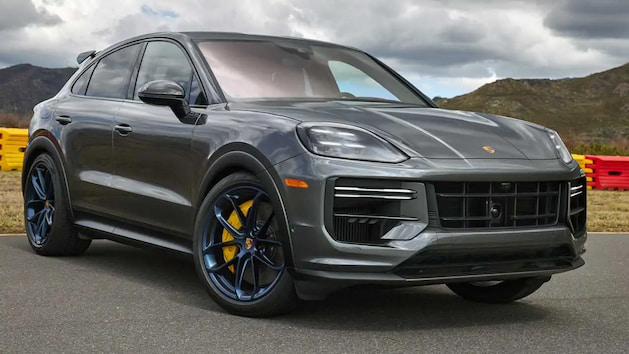
The fact is: although it doesn’t take much to see where differences in rim and tire combinations come into play, it takes a bit of work to beat the lightweight OEM Porsche rim and tire match-ups. They were designed to provide the best balance of performance, weight, and fuel economy; but once you’ve dialled in a similar aftermarket combo of Porsche wheels, Canada has some of the sweetest sweeping roads in the world to put your choice to the test.
Getting Familiar with the Wheel Dimensions That Make a Difference
Whether they’re OEM or aftermarket, all wheels are based on the same 3 dimensions. And while Porsche’s ageless 5- and 10-spoke designs deliver a solid compromise of everything, including cost, a purposeful revisit of those dimensions can produce some major results.
· Wheel diameter (the distance across the face of the rim, from bead to bead);
· Wheel width (the distance across the barrel of the rim, from bead to bead); and,
· Wheel offset (the distance, plus or minus, from the mounting surface of the rim to its centerline).
What this means is if you see a hot set of Dub Porsche wheels for sale measuring “30 x 10 +31”, you know that you’re looking at an aftermarket rim with a 30” diameter, is 10” wide, and has a positive offset of 31mm. And although all 3 dimensions have to work together, each has its own special qualities, so let’s look at each one individually to see how they affect driving preference and performance, as well as where you’ll need to find new compromises.
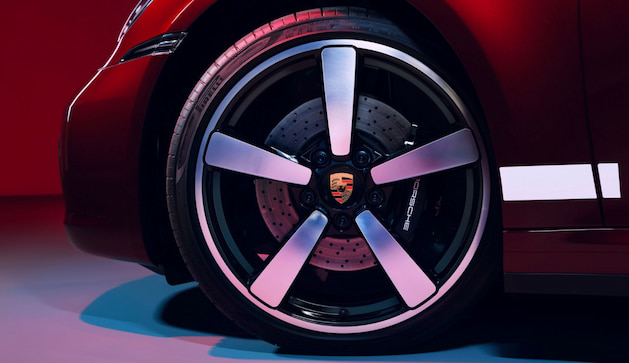
Why Your Wheel Diameter Matters for Drivability
The most visible aspect of any aftermarket rim is its diameter; and depending on which model you’re looking to buy Porsche rims for, these sizes could vary from a snug aftermarket size of 20” and 21” for a 911 or Boxster, to a noticeably healthier 22” rim for a Cayenne or Panamera. It may not seem like there’s a world of difference between the tallest sportscar rim and the tallest SUV rim, but when compared to their OEM equivalents, they’ll have a significant impact on:
· The size and profile of the tire that can be mounted;
· The available clearance of the wheel wells; and,
· The desired performance.
Where diameter is concerned, it’s no coincidence that there’ll always be a preference for mounting the biggest wheels possible. They’re the hottest-looking combos; but the added weight, rolling resistance, and loss of fuel economy can be a quick turn-off if they’re too big. That’s why when you’re looking at aftermarket options, unless you’re planning on flaring your wheel wells, you want a wheel and tire combo that’ll fill them, but won’t turn your vehicle a bear to drive or maintain.
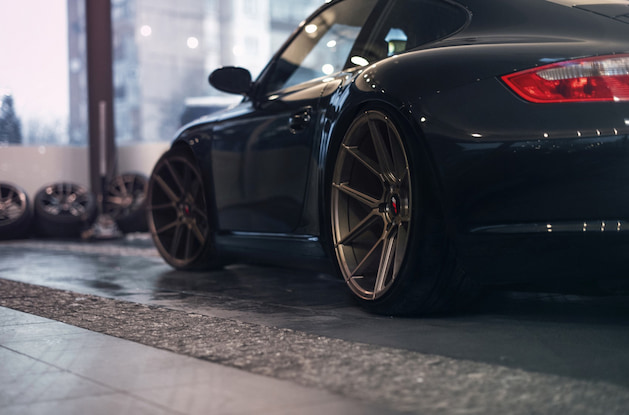
Tweaking Wheel Width for the Best Balance of Performance and Comfort
Not unlike wheel diameter, putting a wider aftermarket Porsche rim on your ride will also affect your appearance and performance. With aftermarket wheel widths capable of supporting tire widths of up to 305mm on 911s, and up to 315mm on Panameras, the wider contact patch that wider rims afford, brings benefits that include:
· Better traction when it comes to acceleration and braking;
· Increased stability at higher speeds, especially in curves; and,
· A tougher, more aggressive-looking wheel track.
A wide, cushy-looking wheel and tire combo is a sight to behold on any Porsche, but it’s also important to remember that cushy-looking doesn’t always equate to a cushy feeling. Wider wheels and tires also mean that more road surface input is going to be transferred to the Porsche’s tight suspension, potentially making a firm suspension feel twice as hard. That’s why as good as they may look, you only want to buy Porsche wheels in their widest configurations when you want maximum traction in dry conditions and aren’t worried about comfort.
Be Careful When Deciding on Aftermarket Wheel Offsets
Aftermarket wheel offsets are one of the most challenging calculations you can make for Porsche tires and wheels because they have to account for engineering that was achieved with Porsche’s nominal OEM offsets. They fall into 3 categories:
· Positive offsets (when the face of the rim is ahead of its centerline);
· Negative offsets (when the face is behind the centerline); and,
· Zero offsets (when the face of the rim aligns directly with the centerline).
The difference an offset makes though, either positive or negative, can be dramatic. Positive offsets preserve your Porsche’s precious lines by keeping wheel and tire combos neatly tucked inside the fenders, while negative offsets can stretch beyond the fenders, making an aggressive-looking wide track appear even more aggressive.
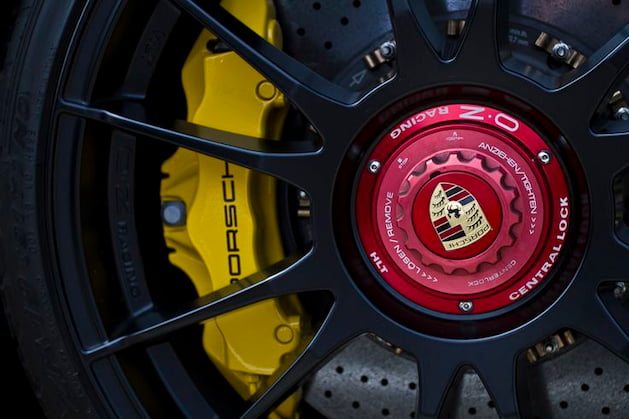
The downside of playing too much with offsets, however, is that in addition to altering your car’s appearance, it can also create a horde of technical challenges, including:
· Shifting the wheel’s proximity to the brake callipers or hard lines;
· The possibility of tires rubbing the lips or insides of your fenders, or limiting turning; or,
· Creating unintended stresses on suspension components, drive axles, and wheel bearings.
In short, you want to be careful when varying offsets too radically. They can certainly give your ride a one-of-a-kind look, but they can make other costly mods unavoidable.
Picking the Style That’s Right for Your Porsche
Let’s face it: we can write volumes about the technical side of rim and tire selections, but no discussion about an aftermarket Porsche wheel can be complete without discussing style; and here’s a fact: style is every bit as unique as the driver behind the wheel. That’s why it’s no surprise that Porsche drivers aren’t at any style disadvantage when it comes to factors such as:
· Wheel design. This includes whether they’re based on honeycombs, spokes, or turbo blades, as well as the number, arrangement, and curvature of their mating surfaces.
· Wheel finish. Porsche rims can come with solid matt, polished, chromed or painted finishes, or combinations of multiple finishes.
· Wheel type. The choices between cast, forged, or multi-sectional rims can make a huge difference in both driving style and car setup.
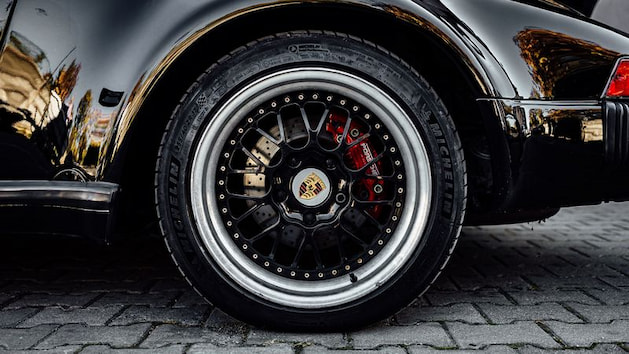
Of course, OEM Porsche rims have never suffered from a lack of style, finish, or construction types, but you’ll quickly realize that what the aftermarket has to offer can take all those characteristics to a brand-new level.
The Final Word
At the end of the day, as a Porsche owner, you know heads are going to turn when you drive by. People look; it’s a Porsche and they expect to see one that looks different from any other Porsche they’ve seen, especially when they look at the wheels.
A fresh new set of Porsche wheels and tires will give your car the identity you want it to have to stand out. They’ll give your car the stance, handling, and acceleration it needs to prove just how precious it really is.

